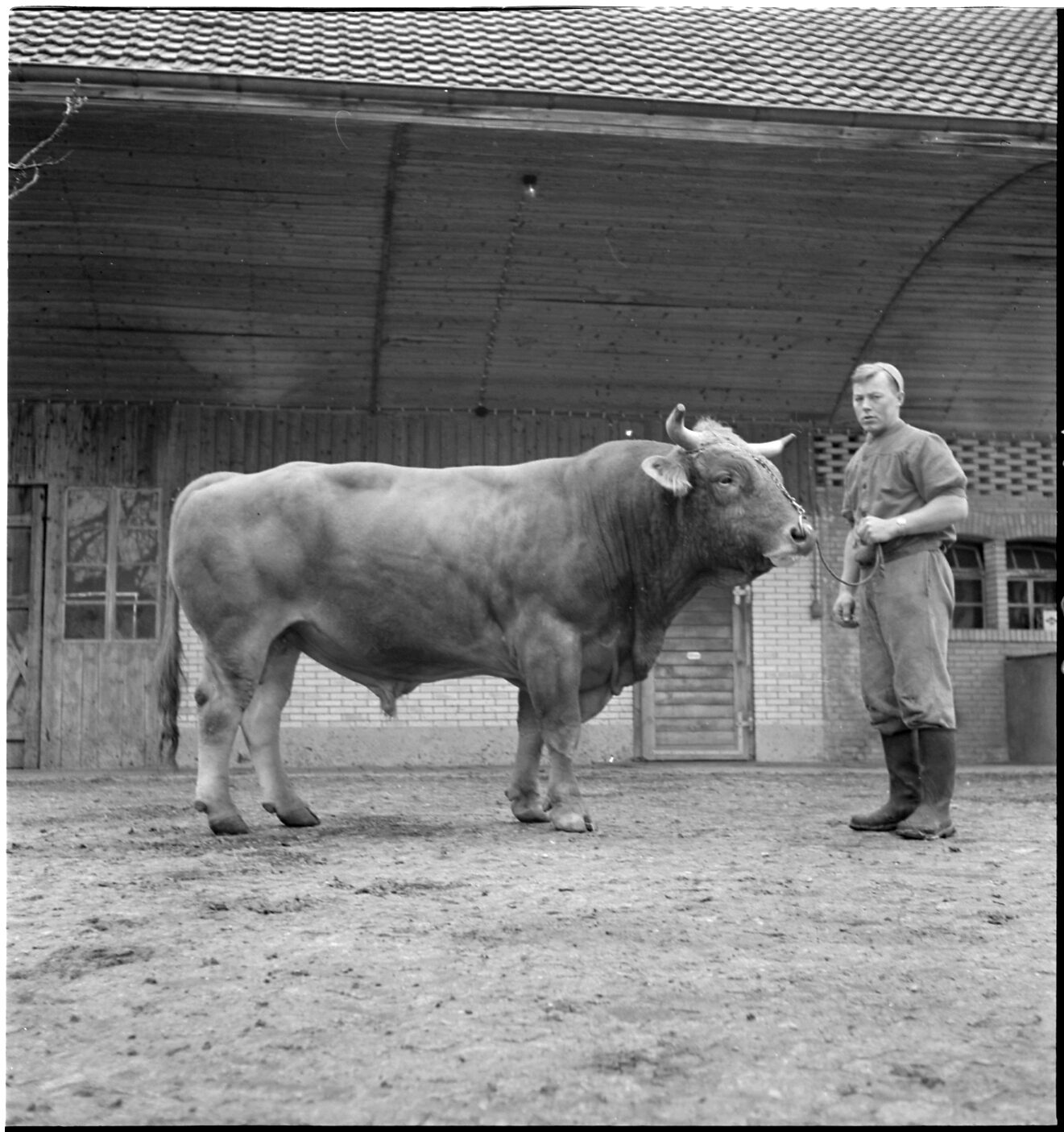Research station at Chamau from 1948 to 2017
Applied research in the canton of Zug
For over 69 years, the Chamau research station was used as a teaching and experimental facility for ETH to research questions (mainly) relating to farm animals with innovative experimental facilities.

In 1948, the Swiss Confederation acquired the Chamau farm as a teaching and experimental farm for around CHF 500,000. Chamau is located in the canton of Zug at about 400 metres above sea level and most recently covered an area of about 64 hectares. It was the first experimental farm for the Institute for Animal Breeding. The farm was to answer questions about farm animals. In the case of cattle, for example, the focus was on breed comparisons with surveys on feed consumption, growth and milk yield. Over the years, the animals also changed; for example, from 1980 onwards, chicken farming was abandoned and a new sheep pen was built.
Special experimental facilities that were installed were also important, including climate chambers, a respiration facility for two large-animal units and a metabolism stable for 20 large-animal units. Climate chambers were used to study the effect of different temperatures, humidity and pressure on the animals. Respiration chambers measured the animals’ gas exchange, i.e. how much oxygen they consume and how much carbon dioxide and methane they release. In the metabolism stable, feed intake was measured and faeces and urine were collected.
Over the years, countless papers have been written at Chamau, including ten dissertations under Professor Gerald Stranzinger alone. These answer questions from the cattle, sheep, chicken, horse and pig sectors, including on fertility and chromosomal mutation issues, as well as on behaviour.
In 2017, Chamau was sold to the Canton of Zug and the farm is now run by the Schluechthof Agricultural School. The Grassland Sciences research group conducts further research at the site and continues its ongoing measurements of greenhouse gas fluxes, which started in 2005.
